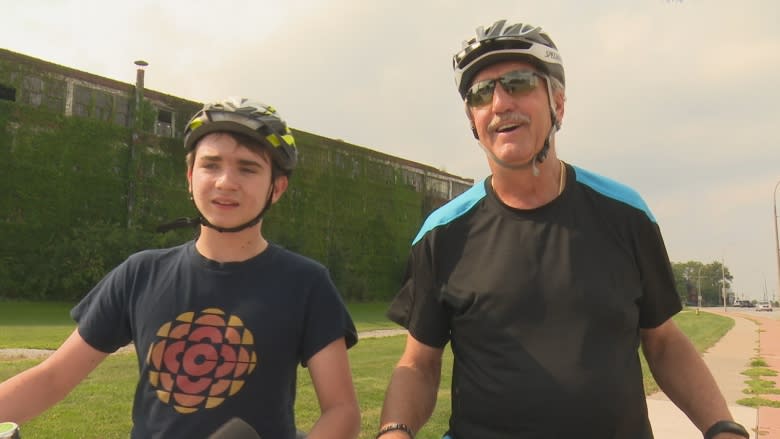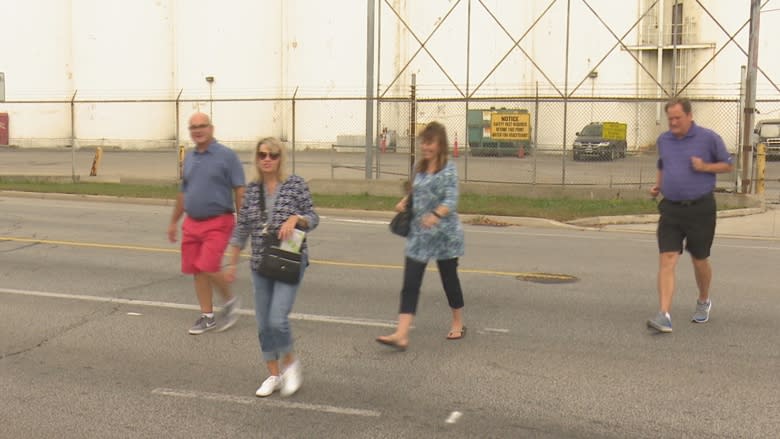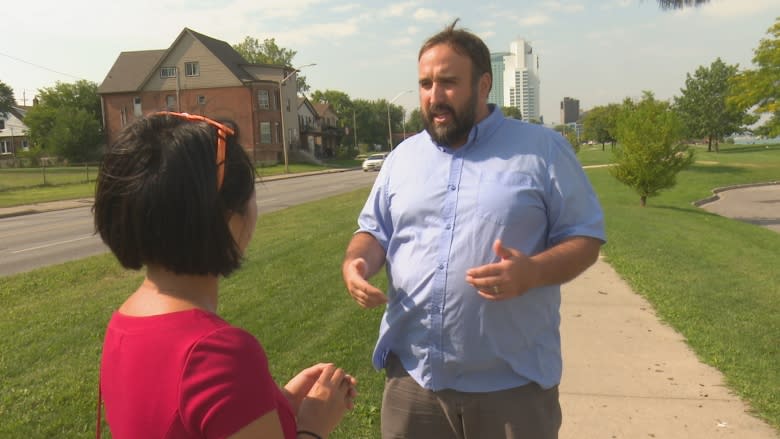Drivers 'going way too fast' on Riverside Drive, say pedestrians
It's the most scenic road in Windsor, but many residents describe Riverside Drive as a highway with vehicles regularly whipping along at unsafe speeds.
The busy street is well-known to police, who issued 1,651 speeding tickets over the past five years, making it one of the most ticketed stretches in the city.
Collisions are also common on Riverside with 221 crashes recorded in last year. That figure is up from 175 incidents in 2014.
Pedestrians and cyclists regularly see the dangers. Attending a wedding at Hiram Walker last week, a group of Americans from Kansas City, Mo. ran across the street near Devonshire Road narrowly avoiding speeding drivers.
"It seems all the Canadians are so nice until you get them in a vehicle," joked John Sedler. "Then, they seem to be going way too fast."
That particular section of Riverside is a speeding hotspot, where police doled out 318 tickets to heavy-footed motorists over the past five years. That number makes the area among the top 20 locations where Windsor police issued the highest number of speeding tickets.
Couple those issues with a lack of sidewalk space and pedestrians say they feel unsafe.
"The sidewalk isn't extremely fluid," said Rochelle Sedler. "We'd be on one side and have to cross the street to get the rest of the sidewalk."
Speeders frustrate residents
Carol Easton has been living on Riverside Drive East for 22 years. Years ago, she led a group called the Riverside Neighbourhood Inc., which opposed the city's plans to widen her street, arguing it would increase traffic.
The group was defeated after the Ontario Court of Appeal dismissed the case. City officials say they no longer plan to widen the street. Instead, they will reconstruct the pavement and add bike lanes in the area.
Traffic is still a problem, though, Easton explained.
"This is a residential neighbourhood, but it's treated more like a highway," she said. "Unfortunately, many people have left the city. They live in Tecumseh, St. Clair Beach and points beyond. For them, this is just an expressway."
It's also difficult for Easton to cross the street to reach the park along the Detroit River because there are few pedestrian crossings.
Other pedestrians and cyclists along the scenic route agree, including John Hrycak who moved to Windsor from Saskatoon.
"It was a bit of a shock for us here," he said. "Now, it seem the cars get the right of way, so it's different for us. They really don't seem to slow down. We just get used to it and run across when we have some time."
Earl Fougere cycles to Windsor from LaSalle. The return trip is abotu 60 kilometres.
"The cars drive fast everywhere. I never see anyone stopped for speeding," he said. "You're not going to change it unless you enforce it."
Heavily enforced area
While Windsor police enforce speeding along Riverside Drive, it's not one of the high areas of concern, according to Const. Andrew Drouillard.
"Obviously, it is a major artery into the city, but people also use it as a scenic road," he said.
Despite the number of speeding tickets and collisions on Riverside, city officials and police say the stretch of road is not a high-priority area.
Figures show drivers can speed up to 70 km/hour at Riverside Drive and Devonshire Road, where the street opens up from two to four lanes, but along other stretches, cars go around 60 km/hour.
"How people feel is a subjective thing," according to city engineer Mark Winterton. "We would encourage them to use the signals for crossings. If you cross at a signal, you should be able to cross safely."
When CBC News brought residents' concerns about the lack of crossings, Winterton said it may not necessarily be accurate.
"If everybody wants a crossing right where they are, I don't think that's going to happen," he said.
Perception of safety is important
But, Ward 3 Coun. Rino Bortolin argues the perception of safety is important.
People "don't want to hear statistics about how many people have been hit on Riverside Drive," he said. "But, if you're walking, running or jogging along the stretch, you'll know you do not feel safe."
While Bortolin does not think re-vamping Riverside Drive is a major priority, he's urging residents and officials to look ahead.
"Should we be putting it on a road diet? Should we be including better sidewalks? Should we include bike lanes?" he said. "Also, commuter lanes are very different from multi-use trails where people are strolling, rollerblading. We can't confuse the two."
Bortolin stressed the perception of safety increases the likelihood people will use a stretch of road.
In early June, the City of Windsor took part in an urban planning experiment where Riverside Drive underwent a so-called road diet.
The downtown portion of the four-lane road was shut down to two lanes to temporarily reconstruct traffic and allow for more pedestrian flow.
While the city acknowledges the success of the experiment, making it a permanent fixture is not in the five-year plan.
"We'll be looking at city hall and the esplanade going down to the riverfront," said Winterton. "We'll be looking at how to move traffic...to allow people to cross safely. All those things will be done in time, depending on council's priorities."




